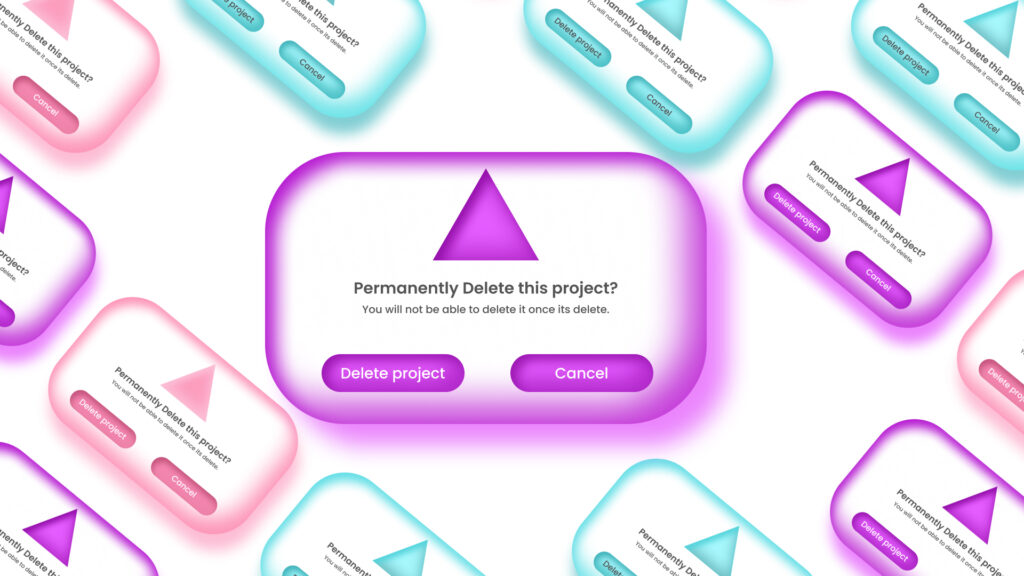Step into the whimsical world of Claymorphism, where digital interfaces come alive with a delightful touch of tactility and charm. This emerging design trend takes inspiration from the playful nature of clay, infusing digital elements with a sense of softness and organic appeal. Join us as we embark on a journey to unravel the magic of Claymorphism, delving into its defining features, creative potential, practical applications, and the boundless opportunities it presents for designers and users alike.
What is Claymorphism?
Claymorphism is a design trend that draws inspiration from the malleable and tactile nature of clay, translating its characteristics into digital interfaces. This aesthetic approach captures the essence of clay by incorporating soft shapes, subtle textures, and a playful color palette, evoking a sense of warmth and approachability. The key elements of Claymorphism include soft edges, gentle shadows, and a focus on creating a tangible, three-dimensional feel within the two-dimensional space of digital design.
This design trend introduces a refreshing departure from the flat, minimalist style that has dominated digital interfaces in recent years. By infusing clay-like qualities into UI elements, Claymorphism aims to create a more engaging and delightful user experience, inviting users to interact with interfaces in a tactile and immersive manner.

The Advantages of Claymorphism
One of the primary advantages of Claymorphism lies in its ability to evoke a sense of warmth and familiarity, making digital interfaces feel more approachable and inviting. The soft, tactile elements of Claymorphism can create a more engaging and interactive user experience, appealing to users’ senses and enhancing the overall usability of a digital product.
Additionally, Claymorphism offers designers the opportunity to inject personality and playfulness into their designs, breaking away from the constraints of traditional, rigid interfaces. By embracing this trend, designers can create visually appealing interfaces that resonate with users on an emotional level, fostering a deeper connection and leaving a lasting impression.
Practical Applications of Claymorphism
Claymorphism finds its practical applications across a wide range of digital products, including websites, mobile applications, and user interfaces for various software. From button designs with soft, tactile edges to textured background elements that add depth and visual interest, Claymorphism offers a versatile approach to enhancing the visual appeal and usability of digital interfaces.
Designers can leverage Claymorphism to create cohesive branding experiences, product showcases, and interactive elements that stand out in a sea of conventional design styles. Furthermore, the playful and approachable nature of Claymorphism makes it particularly well-suited for applications targeting younger audiences or those aiming to convey a sense of creativity and innovation.
The Creative Potential of Claymorphism
Claymorphism opens up a world of creative possibilities for designers, allowing them to experiment with organic shapes, soft textures, and a vibrant color palette to bring digital interfaces to life. By embracing the malleability and warmth of clay, designers can craft interfaces that feel more human and relatable, sparking joy and curiosity in users.
This design trend encourages designers to think outside the box, infusing their creations with a sense of whimsy and charm that transcends the boundaries of traditional design norms. Whether it’s through playful illustrations, interactive animations, or dynamic transitions, Claymorphism empowers designers to create digital experiences that are both visually captivating and emotionally resonant.
Embracing Claymorphism: The Future of Design
As the design landscape continues to evolve, Claymorphism stands at the forefront of a new era, heralding a shift towards more expressive, tactile, and emotionally resonant digital interfaces. By embracing this trend, designers can breathe life into their creations, fostering deeper connections with users and elevating the overall user experience.
In an increasingly digital world, the infusion of tactile, clay-like elements brings a sense of humanity and approachability to interfaces, transcending the limitations of screens and pixels. With Claymorphism, the future of design appears more vibrant, playful, and enchanting, promising a delightful journey for designers and users alike.